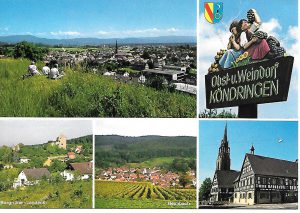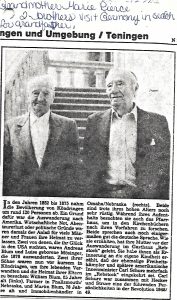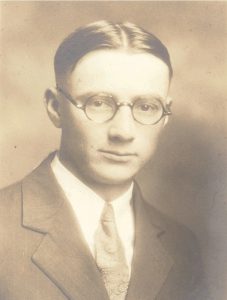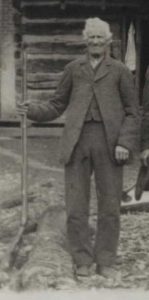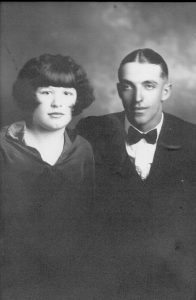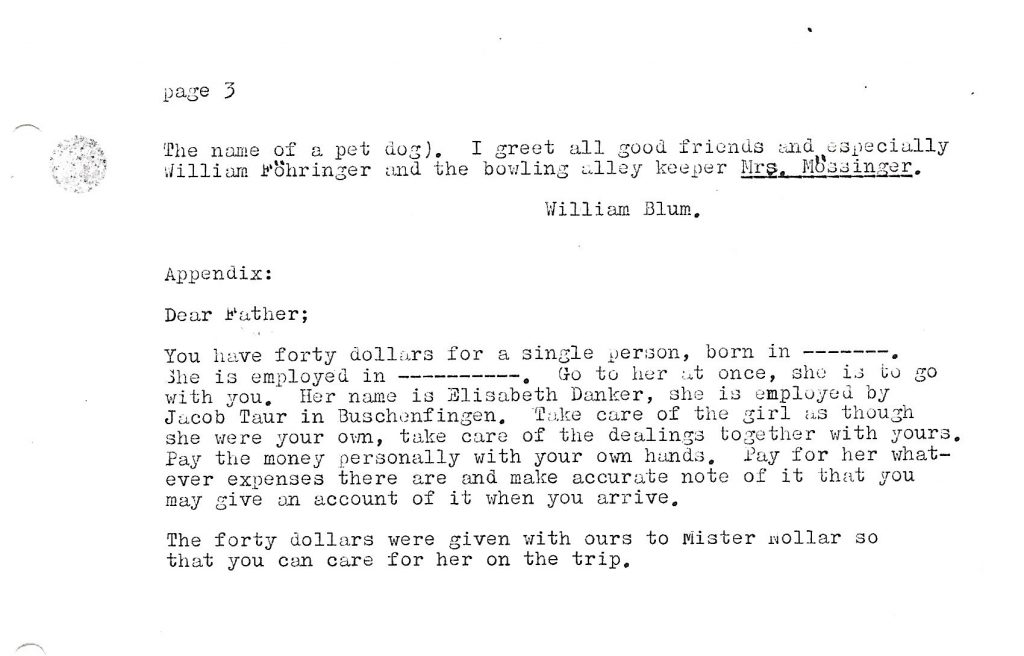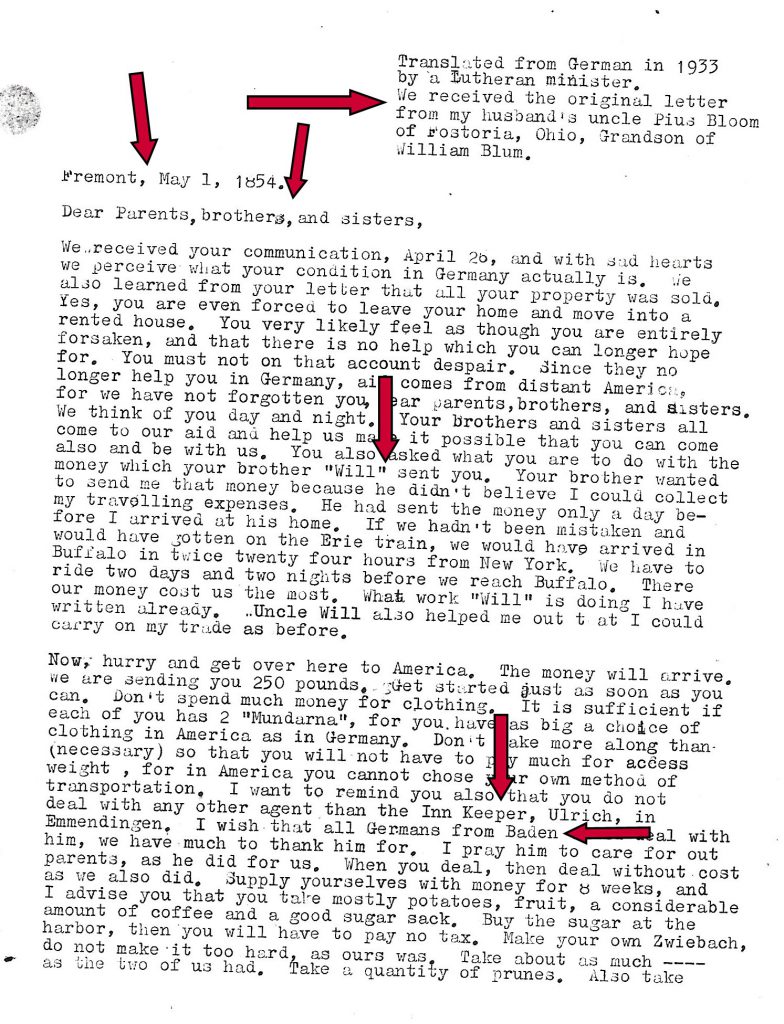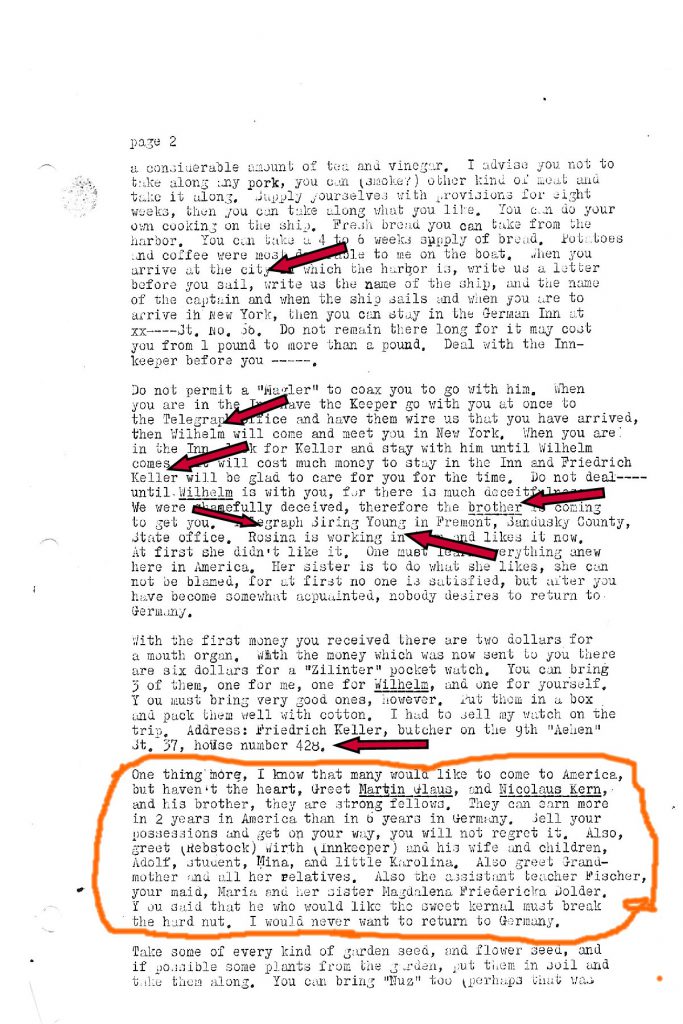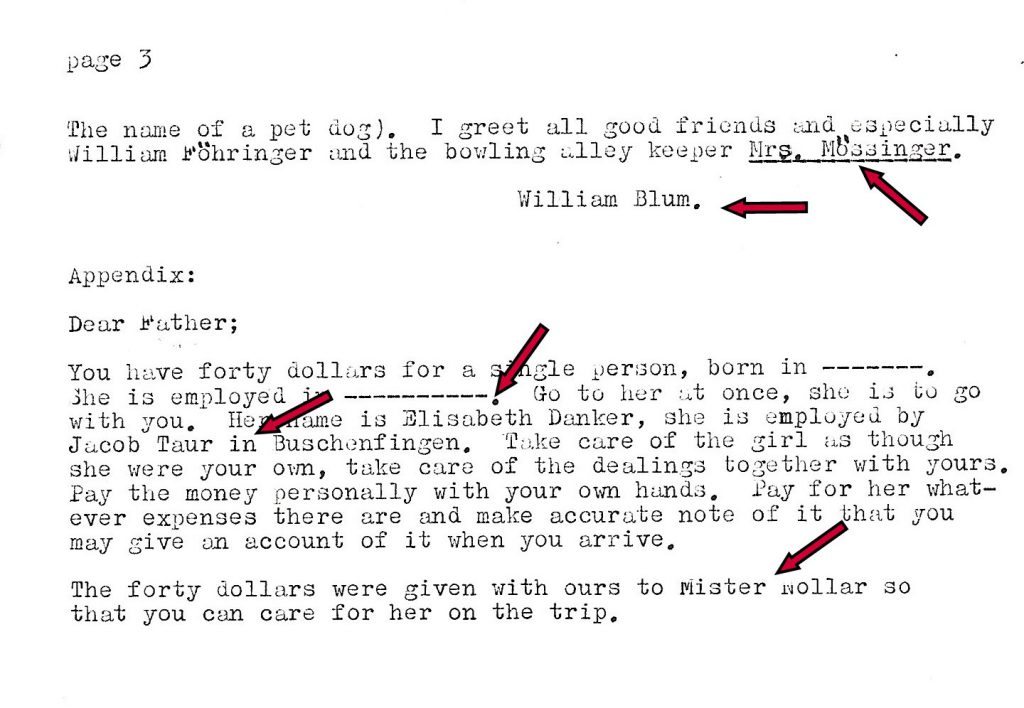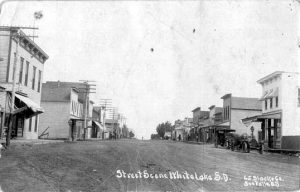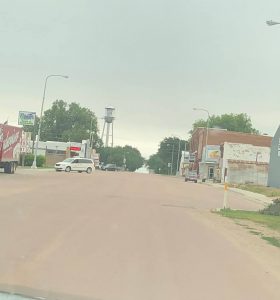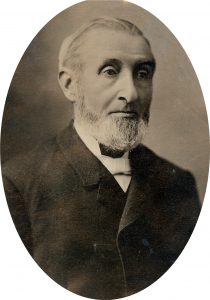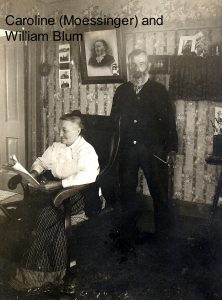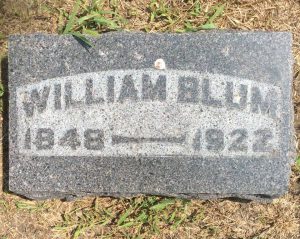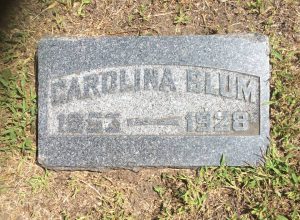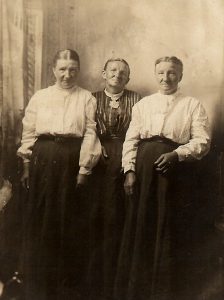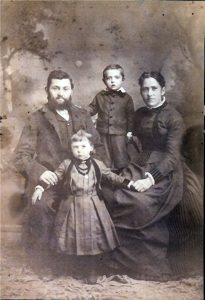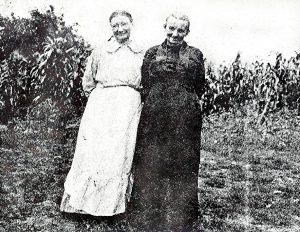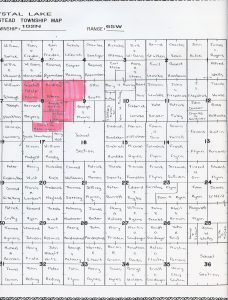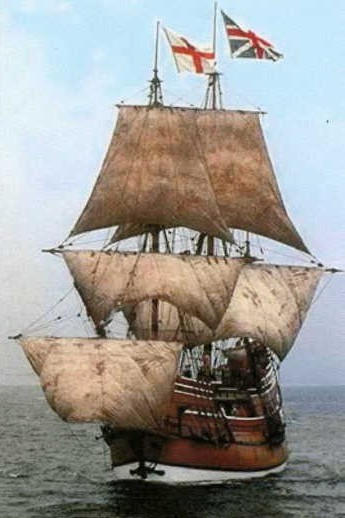 GEORGE PEARCE
GEORGE PEARCE
My Pierce family lineage in America begins with George Pierce my seventh great grandfather (Pearce as the name appears to have been written by him) who was born in Winscombe, Somerset, England in February 1654, son of George Gilbert Pierce and Margaret Pierce.
There is no doubt that George was among America’s founding father’s of this great nation when you look at the history and see how many thousands of people connect through this line to him and his wife Ann. What a remarkable heritage he has given us.
George first married Ann Gainer (Gayner), a native of Thornbury, in the county of Gloucester, England, at a Quaker Meeting. Ann was the daughter of William and Ann (Jones) Gayner. Ann was born about 1663, at Oldbury on Sever, Thornbury, Gloucestershire, England. They were married the 1st day of February, 1679. (date prior to the Georgian calendar).
George and Ann emigrated with their three small children from Bristol, the seaport nearest his residence, in 1684, and had a tract of 490 acres of land surveyed for him in what is now Thornbury Township prior to leaving England.
George was one of the earliest and most influential inhabitants of this township named in memory of the Thornbury district of the country from which his wife Ann was born and raised. It was a desire on his part to keep up the associations most dear to him. From all the research I have found he appeared to have great affection for his wife and his family.
Thornbury township, Chester County was organized in 1687 by the appointment of Hugh Durborrow as constable, when not more than five or six families had settled within its limits. It was surveyed in right of the first purchasers. This township along with Birmingham and Westtown, were the only townships within the limits of Chester County which were organized before 1704. Prior to its founding, the Delaware Indians traveled the beautiful rolling landscape. Both branches of Chester Creek wind through Thornbury and flow to join the Delaware river. The Battle of Brandywine during the Revolutionary War was partially fought in Thornbury Township and George Pearce was most likely among the Militia. It was one of Thornbury’s citizens, Squire Thomas Cheyney, who informed Washington of the approach of the British.
ARRIVAL IN AMERICA
George arrived at Philadelphia prior to Nov 4, 1684 (this being the calendar prior to the use of the Georgian Calendar, then Feb. being the twelfth month), , which that day he presented two certificates to a meeting of Friends (Quaker) held at the Governor’s house. One of these certificates was from the Monthly meeting at Frenshay, in the County of Gloucester. The other was from the Thornbury Meeting.
It is believed that he settled on his newly purchased land in 1865, but his name first appears as an active member of Chichester Friends Meeting in 1686. Shortly after which meetings were sometimes held at his house. He obtained a patent for this land September 22, 1685 and settled just two miles down the road from William Brinton of two of his daughters married his sons .
George was strict in his attention to his religious duties. He gave a share of his time to civil affairs and was dutiful to the improvement of the country. He was amongst the first to be appointed an overseer in the meeting and afterwards became an elder. He represented Chester County in the Provincial Assembly in 1706 and was released of this duty in 1722 “by reason of his age and he being thick of hearing” per his request. This is documented in the records of the Meetings.
CHESTER COUNTY PA
Concord Township, Pennsylvania was formed in 1683. Originally located in Chester County, the township became part of Delaware County when Chester County was partitioned in 1789. “Concord Township encompasses four villages [Concordville, Elam, Markham and Ward] whose past tells the story of Pennsylvania and early America’s development. Located at a vital transportation hub, the Township’s development has always reflected major national and regional economic and demographic trends.”
“Modern Concordville occupies the junction of two of the earliest public roads in the English colonies: Baltimore Pike or U.S. Route One, and Concord Road, laid out by William Penn’s surveyors. The original path of Baltimore Pike lay roughly along the driveway that separates today’s Concord Friends’ Meeting house from “the Grange” building . The buildings on Concord Road at the intersection of Thornton Road and the Friend’s driveway constitute the Concordville National Register Historic District. Many of these buildings qualify for inclusion on the National Register.
“Elam, on Smithbridge Road at Route 202, the next north-south road, and the link between the Lower Counties (Delaware) and the western Pa. counties was home to a thriving tavern and inn industry as early as the mid-18th century.”
“The village of Markham, named for the first governor of the colony of Pennsylvania (where the Friends meetings were held and George attended), lies in the valley of the West Branch of Chester Creek where the present Cheyney Road crosses Baltimore Pike. The village encompasses the Newlin Mill Historic District (Newlin Mill and its buildings, Markham Railroad Station and Post Office, and the William Trimble House and property (of more I will elaborate later), including the only operating Colonial mill remaining open to the public in the United States.”
“Ward covers the old Concord Creek Bridge (also called Ward Run) at Concord Road, near the intersections of Creamery Road, Station Road and Spring Valley. The earliest Pennsylvania mushroom farms and canneries were established there, near the mill complex on Concord Road, and the product called “Philadelphia Brand Cream Cheese” was first produced at the dairy on Creamery Road.”
“Concord Township was also the site of the Willcox (family) Ivy Mills, one of the most significant paper mills in the country that produced the paper used for the first currency printed by the Continental Congress. The family mansion also served as the beginnings of St. Thomas the Apostle Parish (est. 1729), the oldest parish in the Archdiocese of Philadelphia.”
(Bibliography: Quoted text from Concord Township Historic Commission. “The Four Villages of Concord.”)
 George was one of a company who erected “the Concord Mill”, the first mill erected in his neighborhood, and he acquired more land. George Peirce did well in America. He was a faithful Friend, a member of the Assembly, a founder of a school at Thornbury, and he owned a good share of the Concord Mill. He tried to do well by all his children. When William Penn came over in 1699(?) George bought 400 acres beyond the Brandywine and divided it between his son Joshua and his daughter, Betty Peirce Caldwell and her husband Vincent Caldwell at the time of his death.
George was one of a company who erected “the Concord Mill”, the first mill erected in his neighborhood, and he acquired more land. George Peirce did well in America. He was a faithful Friend, a member of the Assembly, a founder of a school at Thornbury, and he owned a good share of the Concord Mill. He tried to do well by all his children. When William Penn came over in 1699(?) George bought 400 acres beyond the Brandywine and divided it between his son Joshua and his daughter, Betty Peirce Caldwell and her husband Vincent Caldwell at the time of his death.
THE PIERCE GARDENS
Joshua (my 6th great grandfather) built a log cabin on his part and raised a family. In 1722 he married his second wife, Rachel Gilpin (my sixth great grandmother) 15 Feb 1696- 20 May 1776, daughter of Joseph, who had been born in a cave. In 1730 they built this fine red brick house, at least the western part, with their initials and the date up under the ridge.
Joshua died in 1752, leaving the property to all his children, but the home place went to Caleb, Rachel’s third son, on condition that he permit his mother to “Possess and Enjoy the Chamber above stairs and likewise below, and one Sellar in the west end of my Present Dwelling House. Caleb was “to fetch and carry as much firewood (fit for the Chimney) as his said Mother will burn in moderation.” She was also to have the use of a mare and a cow. There is good inventory of all the furniture in the house but the only books mentioned are the bible and Sewell’s History of Friends. (from Joshua’s will).
JOSHUA PEIRCE’S HOME, NOW LONGWOOD GARDENS
Caleb soon afterwards married Hannah Greave, a descendant of Dr. Thomas Wynne, who had come over from Wales with William Penn. Among Caleb and Hannah’s children were the twins, Joshua and Samuel, who began bringing fine trees and shrubs here about 1800, planting them around the house. They made the grounds as fine as Mount Vernon or Monticello. They were probably influenced by Humphry Marshall, who lived some miles up the Brandywine.
Many generations of the Peirce family lived here until 1906. It was bought by the late Pierre du Pont in 1915. Finding the old house as steady as a rock, he built a modern counterpart in the back. Always interested in the Peirce’s, he carried on Joshua’s and Samuel’s original interest, and added the gardens, the conservatory and the fountains which are now world famous. He left it all to the Longwood Foundation, so that the place might be enjoyed forever.
George and Ann Gaynor were the parents to ten children.
1. Betty Pierce, b. 18 Nov 1680, Thornbury Township, Chester, Pennsylvania d. 27 Oct 1757. Betty married Vincent Caldwell
2. George Pierce, b. 23 Apr 1682, Thornbury Township, Chester, Pennsylvania d. 1690
3. Joshua Pierce, b. 5 Mar 1684, Thornbury Township, Chester, Pennsylvania d. 15 Sep 1752, Kennett Mm, Chester, Pennsylvania. Joshua married Ann Mercer in 1713, and second, Rachel Gilpin, 1722. They were settled in Marlborough, Chester County, and had nine children, among those were those who planted the well known Aboretum. Their son George Joshua Pierce is my 5th great grandfather
4. Ann Gainor Pierce, b. 8 June 1686, Thornbury Township, Chester, d. 1753, East Caln, Chester, Pennsylvania
Ann married James Gibbons and they settled in Westtown on 600 acres of land, which through his son James, JR., and grandson, also James, was sold about 1708 to Friends for the establishment of the well known Westown Friends Boarding School.
5. Margaret Pierce, b. 11 July 1689, Thornbury Township, Chester, Pennsylvania d. 1689
6. Mary Pierce, b. 25 Dec 1690, Thornbury Township, Chester, Pennsylvania d. Aft 1766, Birmingham Township, Chester, she married Joseph Brinton (son of the afore mentioned William Brinton neighbor of Geroge)
7. Caleb Pierce, b. 21 Feb 1692, Thornbury Township, Chester, Pennsylvania d. 22 Jan 1779, Thornbury Township, Chester, Pennsylvania. Cableb married Mary Walter, Apr 15 1724, daughter of Goodwin and Elizabeth (Sanguist) Walter, emmigrants. Mary was born Jan 5 1698 and died Dec 1753. They resided on a portion of the ancestral acres, where he died Mar 22, 1770
8. Gainer Pierce, b. 1 Apr 1695, Thornbury Township, Chester, Pennsylvania d. 1746 Gainer married Sarah Walter.
9. Hannah Pierce, b. 21 Apr 1696, Thornbury Township, Chester, Pennsylvania d. 1753, East Caln, Chester, Pennsylvania. Hannah married Edward Brinton (son of William)
10. John Pierce, b. 15 Feb 1704, Thornbury Township, Chester, died in his minority.
GEORGE REMARRIES
Ann died 1725 in Thornbury Township, Chester County PA.
After her death George again married widow Ann Webb. From his will it appears that he had great affection for her. They moved then to East Marlborough, Chester, Pennsylvania. This is the land which included the Pierces Park, or “Evergreen Glade”, as it was named by the owner. This is the property in which George conveyed to his son Joshua in 1725, who willed to his son Caleb in 1752, and this is where Samuel and Joshua, established the botanical garden Aboretum. They were succeed by the late George W Peirce, son of Joshua and grandson of George.
The land that was willed to George’s daughter Betty and her husband Vincent Caldwell,consisted of 200 acres adjoining. After their deaths it was purchased by Caleb Peirce in 1758 and then became possession of his great grandchildren of the Cox family. Longwood meeting house and cemetery are situated on a part of it.
George died 19 Jan 1733 in East Marlborough, Chester, Pennsylvania. Below is a copy of his will. I tried to type it as it was written.
THE WILL OF GEORGE PEARCE
Pennsylvaina, Wills and Probate Records
Chester Will Books A-C, Vol, 1-3,1713-1755
George Pierce
- Be it Remembered that I George Pierce of the Township of East Marlborough in the County of Chester in the province of Pensilvania yoman being weak of body but of sound and disposing mind and memory Blessed be the Lord for the same do make this my last will and Testament in maner and form following that is to say first and principally I committ my soul into the hands of my Blessed Saviour and Redeemer Jesus Christ and my Body I Committ to the earth to be buried in a Christian and decent manner by my exe. herein after named and as to the disposing of such temporall estate which it hath pleased God to bestow upon me I do give devise and dispose there of in manner following that is to say IMP my will is that all my just debts and funerall expense be paid as soon as may be after my decease. Item I give and bequeath unto my loving wife Ann Pierce the sum of one hundred pounds lawfull money of this province to be paid to her within one year next after my decease together with all the goods of what kind soever she brought with her at my intermarriage with her as also all the rents and arrearages of rents ariseing off and from any interest rights or claims belonging to the said Ann before my intermarriage (by either of her former husbands with all the property belonging to her of what nature or kind soever. ITEM: I give and bequeath unto my son Joshua Pierce the sum of fifty pounds, forty whereof is due to me I order to be acquited and discharged and that the remaining sum of ten pounds to compleat the afores sum of fifty to be paid unto him within one year after my decease as also to him and Joshua Pierce his heirs and assign one full and compleat third part of any share and interest in the ground and will and all the utensills there unto belonging in Concord called the society mill to him his heirs and assigns forever. Item: I give to my son Caleb Pierce his heirs and assigns forever one other equall and third part of my share and interest in the ground and will and all the utensills thereunto belonging in Concord Called the society mill to him his heirs and assigns forever. Item: I give to my son Gainer Pierce his heirs and assigns the full and compleat remaining one third part of my share and Interest in the ground and mill and utensils thereunto belonging in Concord Called the society mill to him his heirs and assigns forever as also my part and share in Thornbury Schoolhouse with the Land thereunto belonging to him his heirs and assigns forever. I likewise give unto my sons Joshua, Caleb, and Gayner all my wearing apparell both Linnen and woolen to be equally divided between them. Item: I give unto my daughter Betty Caldwell the sum of fifty pounds to be paid to her within one year after my decease. Item: I give unto my daughter Ann Gibbons the sum of thirty pounds to be paid to her within one year after my decease. Item: I give to my daughter Mary the wife of Joseph Brinton the sum of fifty pounds to be paid to her within one year after my decease. Item: I give unto my daughter Hannah the wife of Edward Brinton the sum of Fifty pounds to be paid to her within one year after my decease. Item: I give unto my grandson George Pierce the son of Gainer Pierce the sum of Fifty pounds to be paid to him with it’s lawful interest from one year after my decease when he shall arrive to the age of twenty one years and if my grandson George dye before he arrive to the age afore that then the said sum of fifty pounds with the interest thereon arising be paid to his four sister to witt Elizabeth, Ann, Sarah and Susanna or so many of them as is then living to attain the age of eighteen years. I also give all my books to be equally divided between my seven children and that all my household good be equally divided between my four daughter to wit Betty, Ann, Mary, and Hannah within one year after my decease and I give all the rest and residue of my estate of what nature or kind soever to be equally divided between my grand children to be paid to them that are arrived to the age of eighteen years within one year after my decease and those of my grand children not arrived to the age of eighteen years that their share and dividend of the surplusage of my estate (after all my just debts and legacies be fully paid) shall be put out to interest for the use and benefitt of them and shall in like manner be paid unto them at the age aforesaid with the lawfull interest thereon arising from one year after my decease and if any of my grand children dye before the age of eighteen then I order that the survivors under the age aforsaid shall enjoy and equall dividend of the share of him or her so dying notwithstanding all my former dispositions I only give out of the same my block and case together with my steel mault mill to my son Gainer during his life and then to decend to his son George and in case of his death to his four sisters or so many of them as is then living. Lastly I constitute nominate and appoint my dear and loving wife Ann Pierce exectrix and my two sons Joshua and Caleb Pierce Executors of my last will and testament hereby revoking all other will and wills by me made Declaring this and no other to be my Last will and Testament. In witness whereof I have hereunto set my hand and seal this nineteenth day of January in the year of our Lord one thousand seven hundred and thirty three-four.
George Pierce
Sources
Chester County, Pennsylvania Wills, 1713-1825
Colonial Families of the USA, 1607-1775
Family Data Collection – Individual Records
- North America, Family Histories, 1500-2000
- Pennsylvania, Tax and Exoneration, 1768-1801
- U.S. and International Marriage Records, 1560-1900
- U.S. and International Marriage Records, 1560-1900
- U.S. Census Reconstructed Records, 1660-1820
- U.S., Quaker Meeting Records, 1681-1935
Thanks for taking the time to share my journey. I hope you enjoyed it! If ya did…please leave me a message in the comments below!
Happy Hunting!
The Pierce Family Historian
Susan Holmes

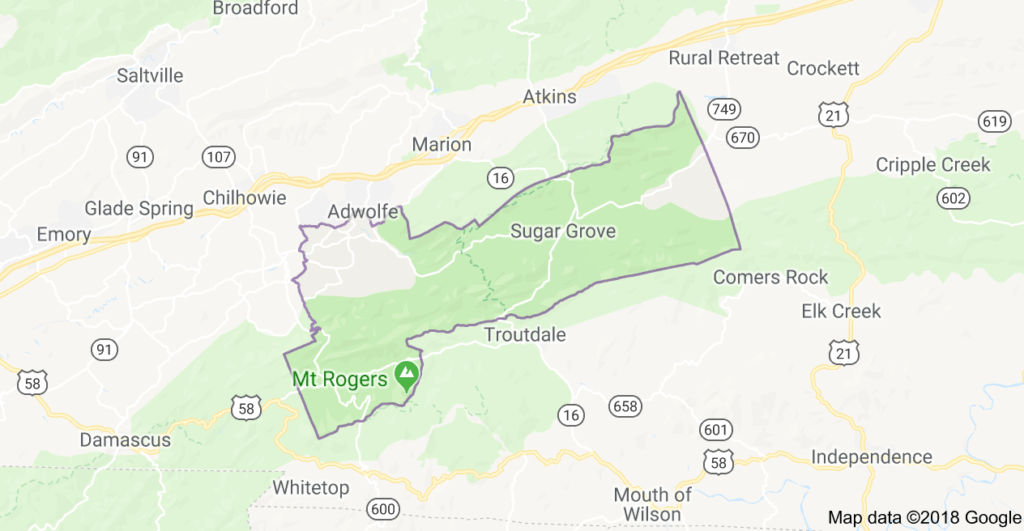
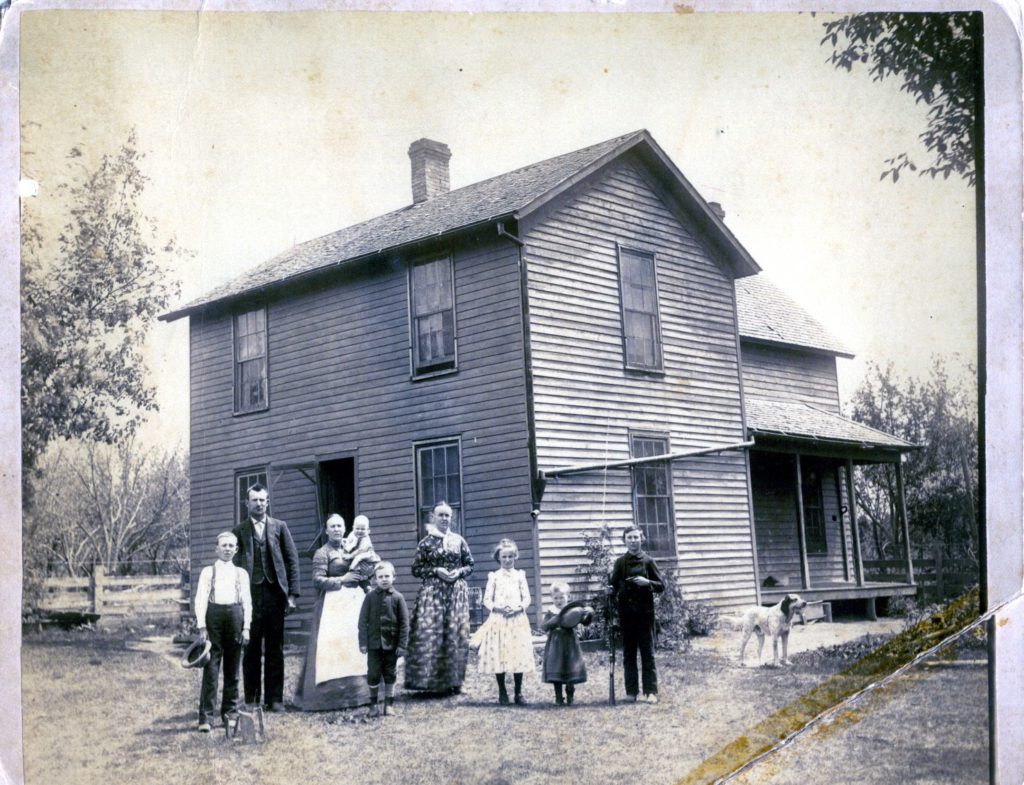



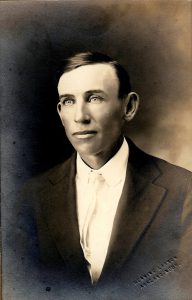 railroads doubled and redoubled again from 20 million tons in 1881 to 130 million in 1904.
railroads doubled and redoubled again from 20 million tons in 1881 to 130 million in 1904.
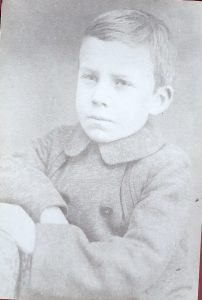 child of eight being born December 29, 1882.
child of eight being born December 29, 1882. The 1900 Census shows Venus still living at home with his parents, but soon after he set out on his own.My grandmother revealed to me that that Venus was young when he started farming, and that he borrowed money and bought a pair of mules and a few pieces of walking machinery. I am assuming that this would be his move to Nebraska. She told that he bought a farm and worked diligently hard to keep it. One night he came home from town and found the farm on fire. He lost everything he had.
The 1900 Census shows Venus still living at home with his parents, but soon after he set out on his own.My grandmother revealed to me that that Venus was young when he started farming, and that he borrowed money and bought a pair of mules and a few pieces of walking machinery. I am assuming that this would be his move to Nebraska. She told that he bought a farm and worked diligently hard to keep it. One night he came home from town and found the farm on fire. He lost everything he had. He went to Pittsburgh, Pennsylvania, where he got a job at the Pittsburgh Glass Co. as a superintendent over a large group of men. He worked hard here for several years. I am going to guess that his older brother Lonnie played a role in helping him attain work here as Lonnie lived and worked at a Glass Company in Pennsylvania for most of his working years.
He went to Pittsburgh, Pennsylvania, where he got a job at the Pittsburgh Glass Co. as a superintendent over a large group of men. He worked hard here for several years. I am going to guess that his older brother Lonnie played a role in helping him attain work here as Lonnie lived and worked at a Glass Company in Pennsylvania for most of his working years.
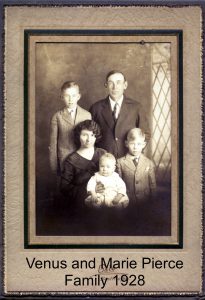
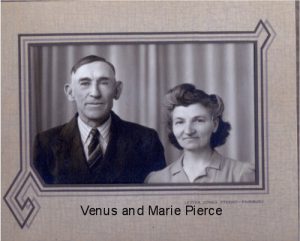
 would pick corn. They all worked very hard to keep the farm going. .
would pick corn. They all worked very hard to keep the farm going. .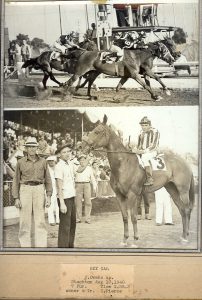
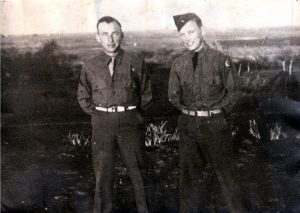





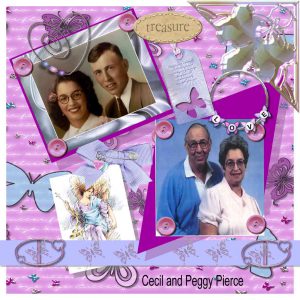
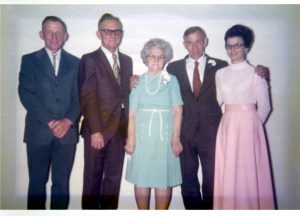

 On December 13, 1958 a second son was born and was named Henry David. Cecil then bought a farm on the county line just south of Narka, Kansas.. They called it the county line farm as it was right on the Republic/Washington Co. lines. Here he and Peggy raised livestock, had an orchard, and acres of crops and pasture land. Many times he would go to Haddam and work part time at the elevator, and still continued to shear sheep while Peggy was left alone with the farm work and children to tend. She loved the country life having grown up a farm girl herself. While on the farm in Narka, Cecil and Peggy had two more children, Angelia Gail, born August 24, 1960 and Clifford Martin, born November 28, 1962.
On December 13, 1958 a second son was born and was named Henry David. Cecil then bought a farm on the county line just south of Narka, Kansas.. They called it the county line farm as it was right on the Republic/Washington Co. lines. Here he and Peggy raised livestock, had an orchard, and acres of crops and pasture land. Many times he would go to Haddam and work part time at the elevator, and still continued to shear sheep while Peggy was left alone with the farm work and children to tend. She loved the country life having grown up a farm girl herself. While on the farm in Narka, Cecil and Peggy had two more children, Angelia Gail, born August 24, 1960 and Clifford Martin, born November 28, 1962.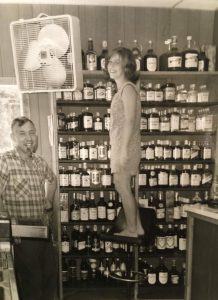
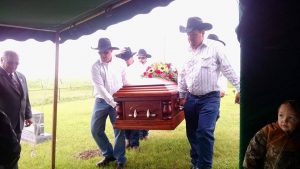 Cecil passed from this life on a Monday, May 11, 2015 at the Belleville Health Care Center where he had resided for three years, at the age of 87 years, after suffering for several years from a paralyzed colon, high blood pressure and a series of strokes. He is buried at the Union Cemetery south of Narka, Kansas.
Cecil passed from this life on a Monday, May 11, 2015 at the Belleville Health Care Center where he had resided for three years, at the age of 87 years, after suffering for several years from a paralyzed colon, high blood pressure and a series of strokes. He is buried at the Union Cemetery south of Narka, Kansas.

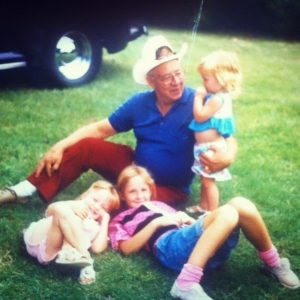
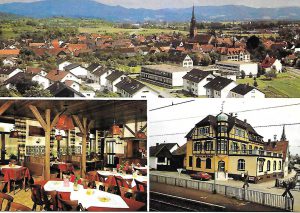
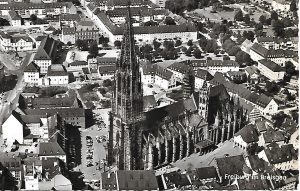 While there, in Germany, Martin visited the parsonage next to the Rebstock. There all records were complete. The parson had adequate forewarning and Martin had made clear that he wanted to know what happened to his grandfather George “Carl ” Moesinger. He had met with the preacher early in his visit and found him fully prepared. This is the day Martin learned that his grandfather was buried July 8, 1866.
While there, in Germany, Martin visited the parsonage next to the Rebstock. There all records were complete. The parson had adequate forewarning and Martin had made clear that he wanted to know what happened to his grandfather George “Carl ” Moesinger. He had met with the preacher early in his visit and found him fully prepared. This is the day Martin learned that his grandfather was buried July 8, 1866.